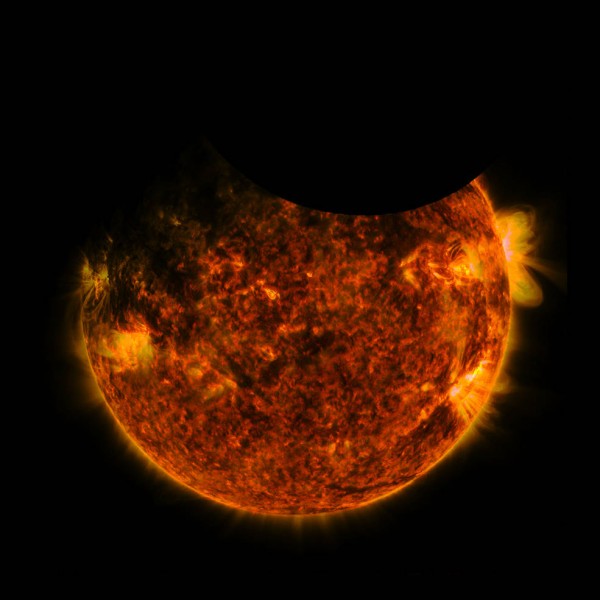By Ana Verayo, | September 05, 2016

Early in the morning of September, 1, 2016, NASA’s Solar Dynamics Observatory, or SDO, caught both Earth and the moon passing in front of the sun.
NASA captured incredible footage and imagery of a solar eclipse, and not just any eclipse, but a rare, double eclipse from space. This phenomenon was captured by NASA's Solar Dynamics Observatory last September 1, where both the Earth and moon crossed in front of the sun.
Like Us on Facebook
NASA's SDO keeps track of the sun's eclipse seasons, as our planet blocks the view of the space observatory of the sun, which is due to SDO's geosynchronous orbit. On September 1 however, Earth completed a total eclipse from the observatory's perspective along with the moon, where SDO captured these series of events, also recording this lunar transit.
The shadows of the two planetary bodies are also distinct, revealed by their edges, as Earth's shadow is more blurred, while the lunar shadow is more pronounced. Since the moon has no atmosphere, its shadow is more distinct, whereas Earth's atmosphere absorbs sunlight, preventing a sharp horizon.
However, this is not a perfect total solar eclipse that is usually seen from the surface of Earth, as viewers in South Africa can see the two transitions of these eclipses. This rare solar eclipse is also known as a "Ring of Fire" or annular eclipse, that has many similarities with a total eclipse, the only difference is, the moon is at a greater distance than the usual from Earth.
This distance makes the moon smaller during the eclipse, which means it does not block the entire sun's face, instead, it leaves a narrow, brilliant ring of fire of the sun's blazing surface.
Meanwhile, next year promises another stunning total eclipse for eclipse viewers in the United States, as a full solar eclipse happens on August 21, 2017.
This total solar eclipse can be seen across major cities including South Carolina, St. Louis and Oregon. Around 15 states will witness this rare total eclipse which will span for more than an hour and a half. Totality will span for around two minutes.
Northwestern states will witness this during the late morning, continuing during noon in western Nebraska then early afternoon towards the eastern states. The last total solar eclipse seen over the U.S. was in Hawaii on July 11, 1991.
-
Use of Coronavirus Pandemic Drones Raises Privacy Concerns: Drones Spread Fear, Local Officials Say

-
Coronavirus Hampers The Delivery Of Lockheed Martin F-35 Stealth Fighters For 2020

-
Instagram Speeds Up Plans to Add Account Memorialization Feature Due to COVID-19 Deaths

-
NASA: Perseverance Plans to Bring 'Mars Rock' to Earth in 2031

-
600 Dead And 3,000 In The Hospital as Iranians Believed Drinking High-Concentrations of Alcohol Can Cure The Coronavirus

-
600 Dead And 3,000 In The Hospital as Iranians Believed Drinking High-Concentrations of Alcohol Can Cure The Coronavirus

-
COVID-19: Doctors, Nurses Use Virtual Reality to Learn New Skills in Treating Coronavirus Patients







